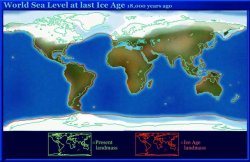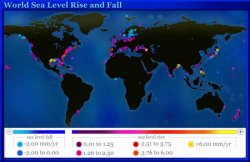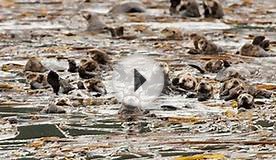Global warming effects articles
 Over the past 425, 000 years the Earth has gone through four ice ages punctuated by brief warm periods. We are currently in such a warm period. The trend over the past century has been one of generally rising global temperature. The consensus among climatologists is that there will be a continued increase during the rest of this century. OK. But is this a problem? Yes it is. Even though there might be a few benefits of warming, such as longer growing seasons in some cooler agricultural areas, the consequences for most people in most parts of the world will be negative. Here are some of the problems.
Over the past 425, 000 years the Earth has gone through four ice ages punctuated by brief warm periods. We are currently in such a warm period. The trend over the past century has been one of generally rising global temperature. The consensus among climatologists is that there will be a continued increase during the rest of this century. OK. But is this a problem? Yes it is. Even though there might be a few benefits of warming, such as longer growing seasons in some cooler agricultural areas, the consequences for most people in most parts of the world will be negative. Here are some of the problems.
Sea Level Changes
At the height of the last ice age 18, 000 years ago, the oceans were about 120 m (400 ft) lower than they are today. Large amounts of water were sitting on land in the form of glaciers that covered a good portion of North America, Europe, and Asia.

The North Sea and the Baltic Sea were mostly land. The Bering Strait that now separates Siberia from Alaska was also above sea level. It is believed that people walked across this land bridge and populated the Americas for the first time in human history.
As the ice age ended, the glaciers mostly melted and their water returned to the oceans. Sea levels rose. Another factor affecting sea level is the temperature of the water. Water, like most substances, expands as it is warmed. The expanded seawater has a larger volume, which contributes to rising seas.
The expanded seawater has a larger volume, which contributes to rising seas.
Image based on data from the Intergovernmental Panel on Climate Change (IPCC)
If we look at the recent past, we see a continuing rise in sea levels. The chart shows sea levels at three locations in Europe over the past 300 years. During this period sea level has risen 100 mm (3.9 in) or more. But the rise in sea level is not the same in all parts of the world. In some places, sea level is actually falling, as shown in the map World Sea Level Rise and Fall.


|
On thin ice: drowning polar bears? Stranded walrus calves? A Science World editor travels north to report on the effects of global warming.: An article from: Science World Book (Thomson Gale) |
|
The evolutionary history of Symbiodinium and scleractinian hosts-Symbiosis, diversity, and the effect of climate change [An article from: Perspectives in Plant Ecology, Evolution and Systematics] Book (Elsevier) |
|
|
Climate control: ocean and atmosphere are intricately linked. Dorrik Stow explores some of the facts, effects and challenges of global warming.(CLIMATE CHANGE): An article from: New Internationalist Book (Thomson Gale) |